- Home
- slideshows
- miscellaneous
- Inside the $1,000 underground 'sleeping pods' that a developer wants to build in San Francisco's super crowded housing market
Inside the $1,000 underground 'sleeping pods' that a developer wants to build in San Francisco's super crowded housing market
There are two apartment building projects in the planned development, one at 401 South Van Ness (right) and one at 1500 15th Street in San Francisco's Mission neighborhood.

As SF Curbed's Brock Kneeling writes, the proposed housing project is slated to go up in the city's Mission neighborhood, which has seen a wave of gentrification as an influx of millennial tech workers have overrun the district in recent years.
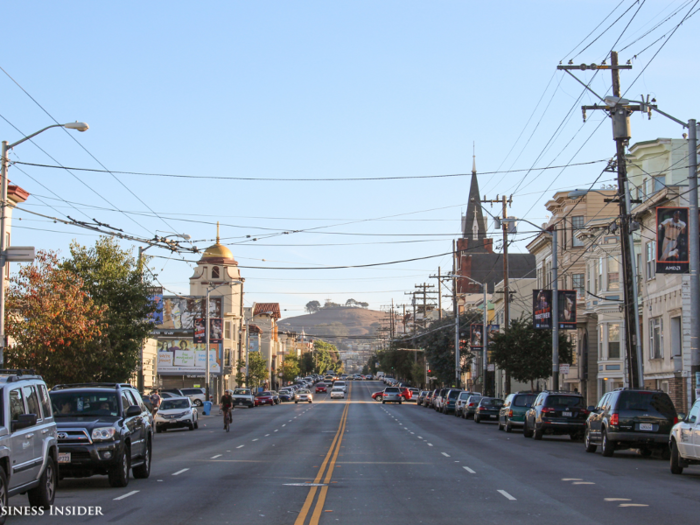
Members of the region's transient community of tech workers would likely fill the pods.
Source: SF Curbed
According to the developer plans, the 88 pods would be built in basement levels that would typically be used to store bicycles and other building accessories.

The "sleeping pod" levels are the so-called congregate living areas or dorm-style sections. The pods would be stacked on top of each other, resembling bunk beds. Each pod comes with a bed and a desk space. There are large communal kitchen spaces with multiple sinks for people to use. Multi-stall showers and toilets exist on both basement floors, and a communal laundry area would be on the basement level.
A common area would sit in between rows of them. The city's building code prohibits them from being enclosed by a wall or a door, so only curtains would allow for each "sleeping pod" occupant to have some privacy.
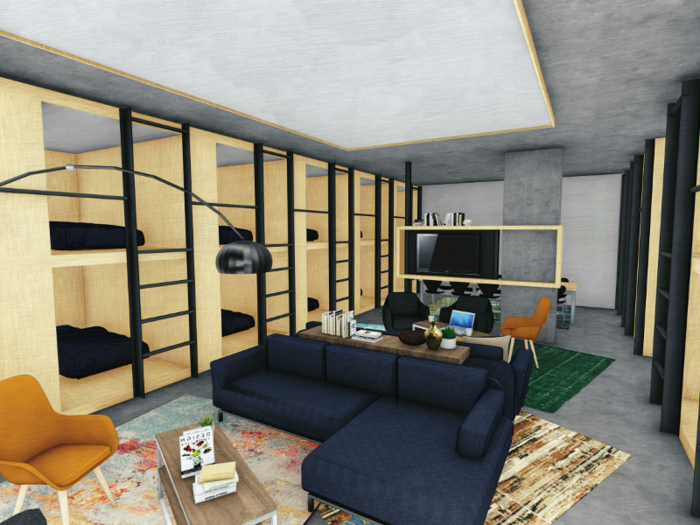
And the area is also windowless, but Elsey said a "light well," or a hole carved out of the building that runs from the open sky at the top level all the way down to the lowest level, will provide natural light. It's essentially the outdoor courtyard and is one of the necessary measures Elsey took to comply with the city's building code.
"The people that are in the basement, they have basically the same view as people on the second or third floor," Elsey told Business Insider.
They'll be priced from $1,000 to $1,375, with the rest of the 200-square-foot above-ground units priced between $2,000 and $2,375. That's not a bad deal in San Francisco's renter market — various sites set the city's average rent at $3,550, some at $2,492 — though of course, you're getting what you paying for with a subterranean bunk bed.
Source: SF Curbed
Elsey said his "sleeping pods" offer a diversity of housing stock and choice for residents, though he acknowledged that not all people would opt for this kind of living style.
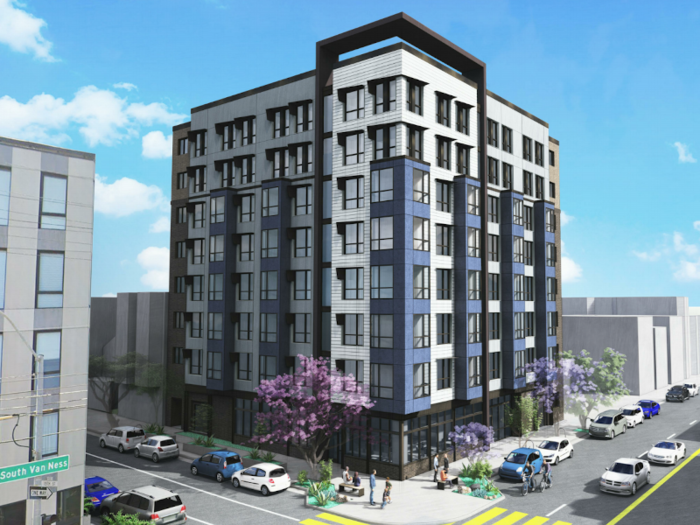
Elsey said his plans meet all building code requirements. He has yet to submit a building permit application, but he said the city's building department has reviewed his project plans. However, a spokesperson for the San Francisco Building Department told Business Insider that they have no record of reviewing Elsey's project plans.
Elsey's plans have to go through the San Francisco Planning Department first. The planning department has a different set of requirements and also can use its discretion to determine whether or not a new development is best for the health, safety, and welfare of the public. Elsey said the planning director he spoke with indicated that the department did not support Elsey's development plan, without giving him a concrete list of reasons as to why. But the developer said the planning department is currently pulling together a more itemized description of what they do or do not like about the proposal. Only then will he begin to move forward with officially submitting a building permit application to the building department.
The San Francisco Planning Department did not immediately respond to Business Insider's request for comment.
Developers in San Francisco are tasked with creating or contributing to affordable housing when proposing new development.
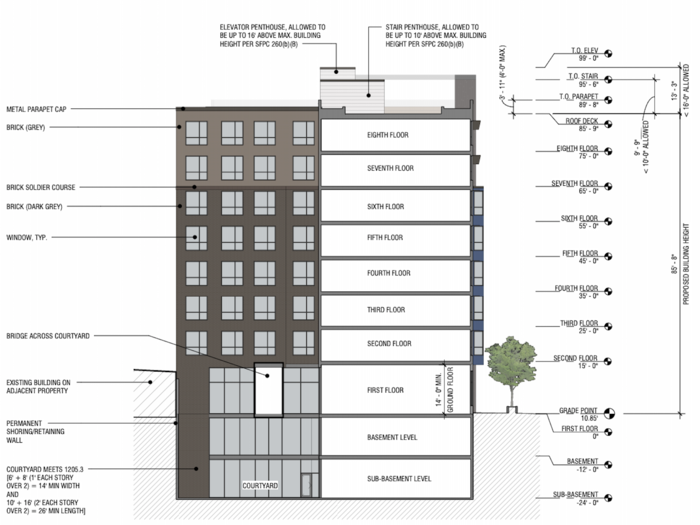
One option is to designate 25% of units in a residential project that has at least 10 units as affordable or below-market-rate, which Elsey said his plans comply with. But Elsey said the affordable units aren't solely confined to the underground levels.
He said it's an equal split between the two different unit types, the "sleeping pods" and the above-ground studios — 25% of the above-grade units will be affordable, while 25% of the "sleeping pods" will meet that inclusionary criterion, which is why there's a price range on each type.
"That's basically the haves and the have-nots, right?" Elsey said of the idea that the inclusionary units would be confined to the underground levels. "So you have basically an equal number."
Elsey's proposed microunits are nothing new in San Francisco's existing alternative housing arena. Tech workers looking for a place to merely lay their heads have long been known to shack up in unconventional places.
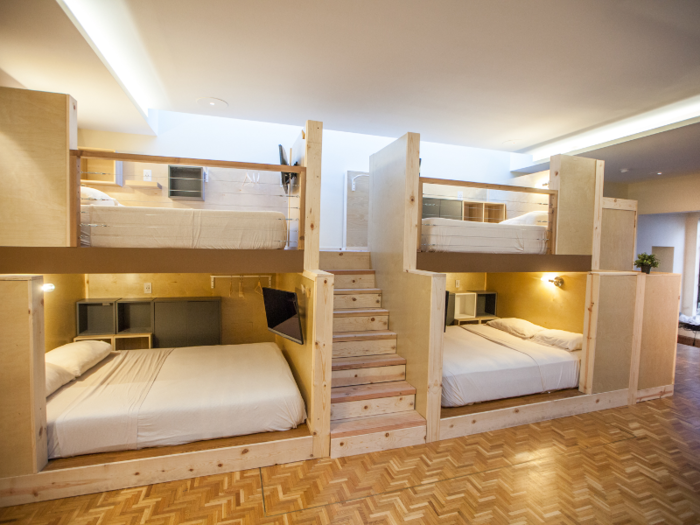
California company Podshare began renting out bunk beds in San Francisco for $1,200 a month in July 2019, as Business Insider's Libby Brandt reported. Communal living arrangements, hacker houses, and even turning to co-living startups for help to find housing have become a necessity for many in San Francisco.
But this may be the first concept involving subterranean housing units. Their conception is a product of San Francisco's current real estate market — the job market, mostly bolstered by the tech industry, attracts young professionals worldwide to the city. With such high demand and limited housing stock, rent costs are high, and some workers are willing to accept smaller and unorthodox living spaces.
Popular Right Now
Popular Keywords
Advertisement